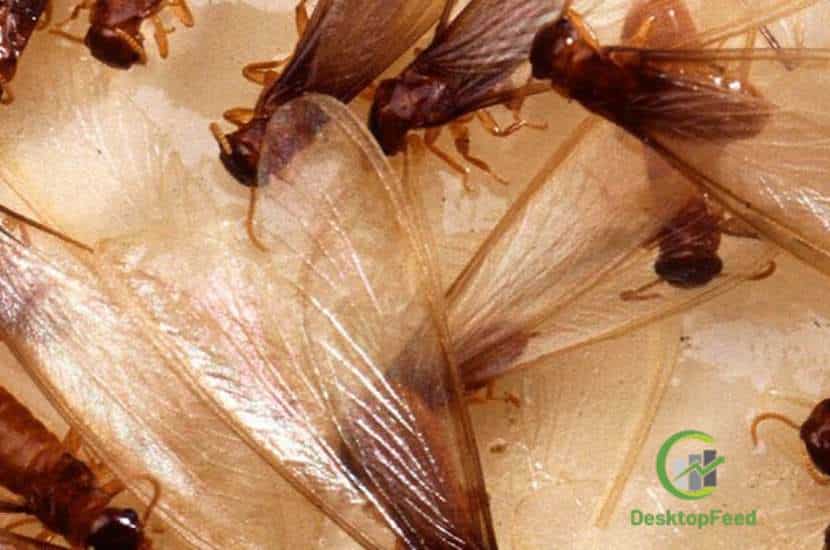How to Get Rid of Flying Termites

How to Get Rid of Flying Termites | If you see a flying termite in your home, you probably have a problem with termites. Although these creatures live inside your walls, you can still see their wings around your windows and doors. These insects are trying to find a new home or reproduction site. This is a warning sign, as the queen and king of the colony have wings. If you have this problem, you need to treat it right away.
What Are Flying Termites and How to Get Rid of Flying Termites
Flying termites are also called “Snarmers” or “Alates”. These are reproductive termites, and they have a job: leave the colony, find a companion and a suitable location and create a new colony that will return home to thousands, or sometimes even millions of terms of new termites.
If you see a flying termit, it is probably a subterranian term, depending on the part of the country in which you are and the period of the year. These termites live in colonies underground and move through mud tubes.
Underground termites are generally growing and usually appear when a colony has between three and five years. As a rule, farms emerge from soil, tree strains or cracks and holes in the foundation of a building.
The exact calendar of a swarm depends on several factors, including geographical location, temperature, precipitation and moisture. Many underground termites will begin to swarm in the spring in the southern United States when there is a lot of rain and climbing temperatures, and moisture levels are starting to increase.
How to Identify Flying Termites
The termites of swarming are relatively easy to identify, although they are commonly confused with another pest: the swarming ant. Like termites, these ants are breeders and many species that can swarm. However, the enhansming carpenter ants are most often wrong for termites.
The first factor of identification of an Swarmer Termite is its wings. These termites have two sets of equal wings of equal size. The ants, on the other hand, have large earlier wings and smaller posterior wings.
Flying termites are about one inch long and they are usually a dark brown black color. They also have large size and straight antennas. The flying ants have narrowly, or pinched, sizes and folded antennas.
How Do You Stop Flying Termites in Your House?

As the owner, you should be looking for signs of termites activity. In addition to the earnings, these include mud tubes, which are often visible outside a structure and indicate where the parasites are coming out and exhausted. Houses with concrete slab foundations are more susceptible to termites infestations because termites can crawl through small cracks in slabs and mud tubes are often visible here.
If you find termital truths inside your home, you probably have an active colony somewhere in the structure. If the teaching machines are outside, you can also have an active colony at home or nearby, and it is worth having a professional inspection of termites.
You can help prevent tarmite infestations at home:
- Store firewood away from your home
- Keep the mulch of your foundation and ensure at least four inches of foundation is visible above the ground
- Maintain drainage systems and make sure to direct rainwater away from your home
- Repair and eliminate leaks and moisture
Also Read: One Touch TV – How to Watch Movies and Live TV on Your PC
Things You have to do when see Flying Termites at home
The first thing to do is to get rid of them immediately. These winged creatures are easily identifiable because they have wings. They shed their wings when they find a safe place to nest and look for wood to feed on. If you’ve already found some winged termites, you should take action to eliminate them. If you’ve noticed their wings near windows, you’ve already seen some damage, so you should take action to get rid of them.
Identifying a flying termite infestation is easy. Just look for discarded wings and look for mud tubes. The more wings you see, the worse the infestation. Another way to tell if you’ve got flying termites is by inspecting your home for signs of termite damage. Check for rotting wood and tunneling. Once you’ve identified these signs, you can start treating your home.
If you’ve already discovered a flying termite infestation, you’ll want to take action right away. A professional exterminator can eliminate the entire colony. Baiting systems should be placed at least one foot apart from each other. If the infestation is small, you can treat it with orange oil and spray it. If you don’t have time to hire an exterminator, you can use orange oil or other natural products to kill the flying termites.
Seeing a flying termite outside your home is a sign of a large colony within a few hundred metres of your home. This is a sign that you should take preventative measures to protect your home. Ensure that your termite barriers are effective and remain intact. If your barrier is older, it will be more vulnerable to worker terms looking for food. So make sure to take action right away!
When you see a flying termite in your home, don’t ignore it. They are very damaging to your home, and they can cause a lot of damage if left untreated. You can identify them by their wings by windows and other places where they can access food and shelter. They are also known as alates. As soon as you see these insects, take action to get rid of them.
For More Articles Visit: DesktopFeed






